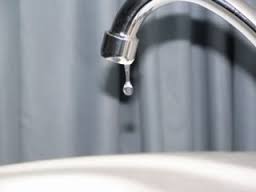
Fixing Leaking Kitchen Faucets
Whether it’s an annoying drip or water build up, you’ll want to take care of a leaky kitchen faucet. Unless it’s in poor condition or you want a new style, it is usually more economical to repair rather than replace that faucet.
Fixing older two-handle units are usually a matter of simply replacing a washer and is a common do-it-yourself project. On the other hand, modern single-handle units can be complex and tricky to repair and most people call in a plumber. You can find numerous DIY instructions on the web, so let’s take an overview to see if your particular situation is something you want to tackle yourself.
Types of Leaks
The problem is often just a loose “packing” nut at the top, or a bad washer or “o-ring,” so it’s worthwhile to consider when and where the faucet is leaking before digging into the valve.
If the leak only occurs when the faucet is turned on then it’s probably a worn o-ring where the spout swivels, especially if that leak is at the base of the spout. A leak under the sink may be at the fittings to the faucet. Don’t forget to check if the problem is with the spray hose. Otherwise it may indeed be the valve that is causing the problem. Those leaks can occur in a variety of places so that it’s usually best to disassemble the fixture for a thorough inspecting and to replace all washers, o-rings, and gaskets. If the valve parts are worn or have significant scale build up or corrosion it may well be better to replace the kitchen faucet than to repair it.
Types of Faucet Valves
There are four types of valves, and each has its own repair procedures and levels of difficulty. So lets take a closer look. Unfortunately you may need to at least partially disassemble you faucet and compare it to pictures before you can be sure what type you have.
Compression
Older and traditionally-styled two-handle faucets use compression valves. Perhaps the easiest to repair, their leaks can often be fixed simply by tightening the packing nut at the top. If that doesn’t do it, you’ll need to loosen and remove the nut, then turn and remove the valve unit and replace the washer on its bottom. In case that still doesn’t stop the leak, the next step is usually to grind the metal valve seat. This requires a special tool and if done improperly the faucet will have to be replaced.
Cartridge
Cartridge-type single-handle valves are more complicated, but are still relatively straightforward to repair. You start working your way down by removing the cap, the handle, and sometimes a cartridge retainer clip. You then pull out the cartridge itself and replace the o-rings, making sure to give them a coat of grease before reassembling the faucet. Many people opt to simply replace the entire cartridge; these cost around $20.
Ball
This type of faucet has a rotary ball deep inside. They involve lots of different parts — the ball, springs, seats, o-rings, and more — in a tricky arrangement. Their repair has been likened to brain surgery. But don’t give up before you even start. Sometimes just removing the handle and tightening the adjustment ring will take care of the leak. At the opposite extreme, if a compatible replacement kit isn’t available it will be necessary to replace and even relocate the entire fixture.
Ceramic Disk
These valves rarely need fixing, so check to see if yours is still under warranty. Leaks are most often the result of a damaged seal. You’ll need to remove the handle, cap, and mounting screws and then the cylinder. If cleaning and replacing seals doesn’t do the job you’ll need to replace the cylinder with a new one. When reassembling everything, be careful not to over tighten or turn the water back on suddenly; these can damage the ceramic disks.
Tips
Instructions remind you to turn off the water (both hot and cold) using the valves under the sink to avoid having a geyser in your kitchen. Just to be safe you should double-check by opening the faucet to make sure everything is indeed shut off before you start any disassembly. If those shutoff valves have been sitting there for a long time, turning them can result in another leak. Fixing that is pretty much the same as for a compression faucet, except that you’ll need to turn off the water to your entire building and it may take a while for an open faucet to bleed off the water pressure.
For commercial buildings most people opt for bringing in a professional plumber. Everyone is usually busy with their regular duties and the cost savings usually aren’t worth the risk of extended downtime.
For homeowners, in deciding between a plumber and do-it-yourself, you need to consider the personal value of your time away from work, the inconvenience of a longer downtime, and the odds of ending up calling a plumber anyway.

